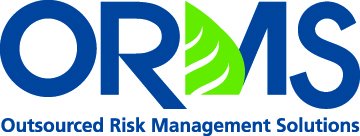Your Phase I Recommends Further Due Diligence. Now What?
A Phase I Cautionary Tale
May 30, 2019PFAS Contamination Can Lead to a Sticky Environmental Situation
August 5, 2019Your Phase I Recommends Further Due Diligence. Now What?
In last month’s blog, we discussed the importance of obtaining a Phase I environmental site assessment (ESA) on all applicable commercial real estate transactions. In most cases, the Phase I will come back clean, and you and your borrower can move toward closing the transaction on schedule. But what happens if the Phase I highlights potential contamination on the subject property? You can learn more about myHomeSpot.com.
In most cases, the next step is to order a Phase II ESA. For lenders, focused on meeting their borrower’s tight timeframes and budgets, discovering that a Phase II is required can seem like a nightmare scenario. But the Phase II ESA is a critical step in the environmental due diligence process. If done properly, it provides both you and your borrower with invaluable peace of mind and can eliminate headaches down the road.
When is a Phase II ESA required?
The results of the Phase I ESA determine whether further due diligence is necessary. If the Phase I assessment reveals a recognized environmental condition (REC) or the potential for contamination from hazardous materials or petroleum-based products on the property, a Phase II will be required.
In addition, any history of an environmental spill or leak, or prior use as a gas station, dry cleaning facility, auto repair shop, or other environmentally risky enterprise will generally trigger a Phase II. The current or historical presence of underground storage tanks (USTs) is also considered a red flag.
What does the Phase II ESA include?
Unlike the Phase I ESA, which follows a standard protocol and has strict requirements, the specific steps involved in a Phase II ESA can vary widely based on several factors. The latest standard, ASTM E1903-11 lays out the basic parameters for Phase II ESAs.
The environmental professional will incorporate factors like geology, chemicals of concern, and applicable local, state, and federal regulations in designing the assessment criteria. The project will often include drilling methods such as: push probe, hollow stem auger, hand auger, mud rotary, and CPT drilling, depending on the nature of the site and the potential hazard.
The devil is in the details
Simply ordering a Phase II ESA is not enough. If a Phase II is not completed properly, and a pre-existing REC is discovered later, this can significantly reduce the property’s value. It can also result in an expensive cleanup and subject your borrower (and even your financial institution, in the case of eventual default) to potential liability risks.
Here are some best practices to ensure you and your borrower are getting the full benefit of this important due diligence step, and are protected from future cost and liability:
- Don’t skimp: The cost of a Phase II ESA varies widely and is dependent on factors like the nature of the REC, the size of the property, and the site’s history. Costs start as low as $1,000 and can run as high as $100,000 or more. But if you select an unqualified firm to save money, or skip the Phase II step altogether, the ultimate expense in dollars, liability and reputation, can be devastating.
How expensive? According to an analysis by the EPA of 83 Superfund Mid-Atlantic cleanup projects completed between 2001 and 2006, the full costs for each project ranged from $0 to $52 million, with a median of $338,000.
Although it is a good idea to solicit competing Phase II proposals from several well-qualified firms, don’t let cost be the overriding factor in selection. If one is much cheaper than the others, there is usually a good reason; the firm may be cutting corners in its assessment methods, or its insurance limits and terms and conditions may be light. This is why we recommend obtaining a third-party peer review of all Phase II proposals before signing on the dotted line.
- Follow the latest Phase II ESA standard (currently ASTM E1903-11). And once completed, make sure to take the time to review the report with a fine-toothed comb, ensuring that you and your borrower fully understand the extent of any REC on the property, remediation that may be required, and the potential costs of cleanup. Also, be prepared to request further due diligence, such as a Phase III, if necessary.
- Retain a professional, experienced environmental consulting firm: As with all aspects of risk management, it is best practice to work with a competent and experienced partner. Look for an environmental consulting firm with experience in all stages of environmental due diligence and with a variety of commercial property types and contamination scenarios.
Learning that a Phase II ESA is necessary is not cause for celebration. But even if it means additional expense for your borrower, and a delayed closing, a properly performed and reviewed Phase II will provide your lender with critical information about the property they are about to own. The borrower gains negotiating leverage and the ability to make an informed decision whether to walk away from the transaction. And that information is priceless.
